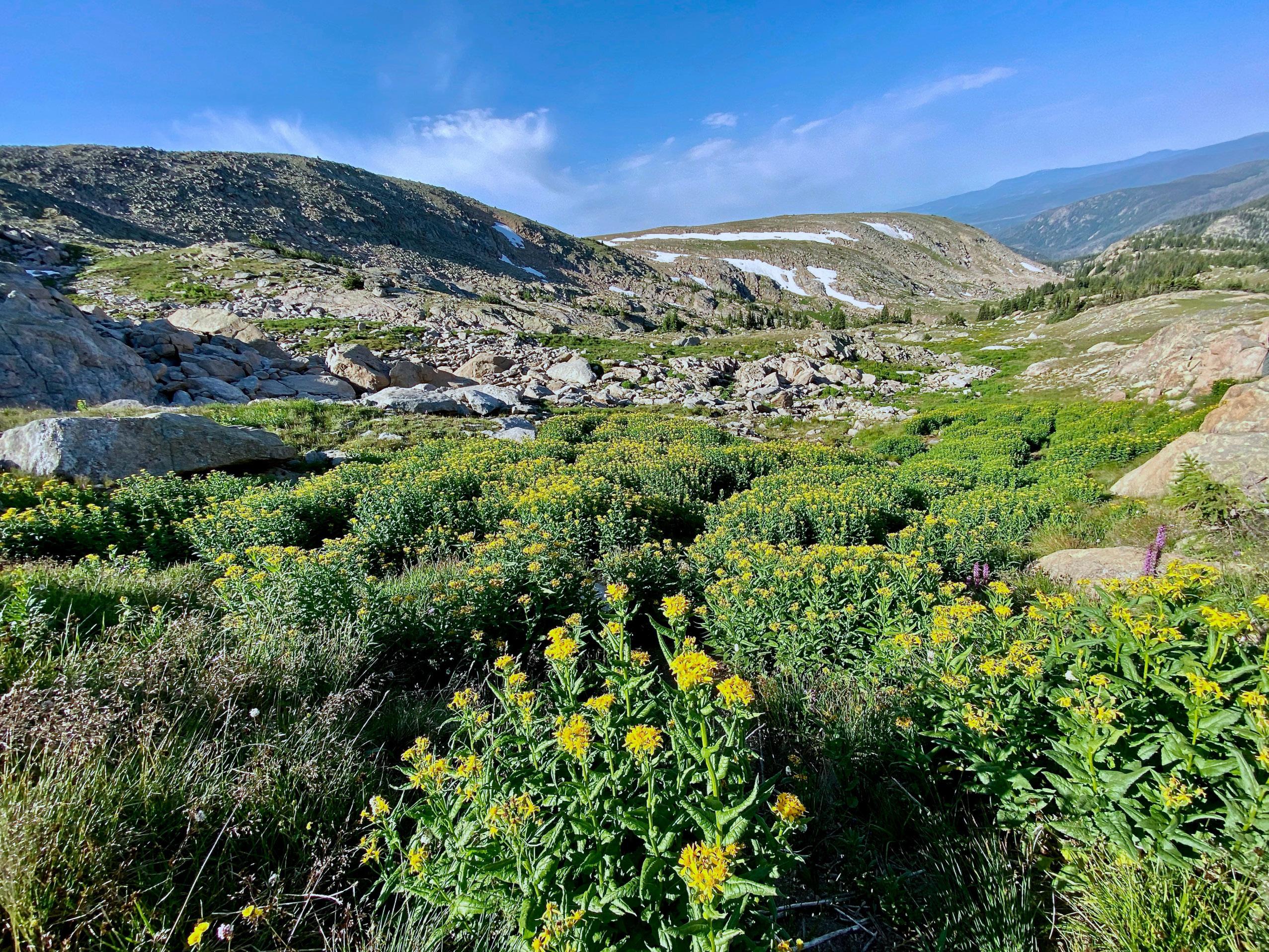
6 minute read
Seasons of Wildflowers
Story and photos by Marlene Borneman
Advertisement
- Thomas Moore, The Last Rose of Summer, 1830
Summer is over and so are Colorado's wildflowers.
I'm preparing for next wildflower season by making my “must see” list. I'm also investigating plants that I was unable to identify this summer. For example, late in August I spotted a shrub in several locations that I did not recognize.
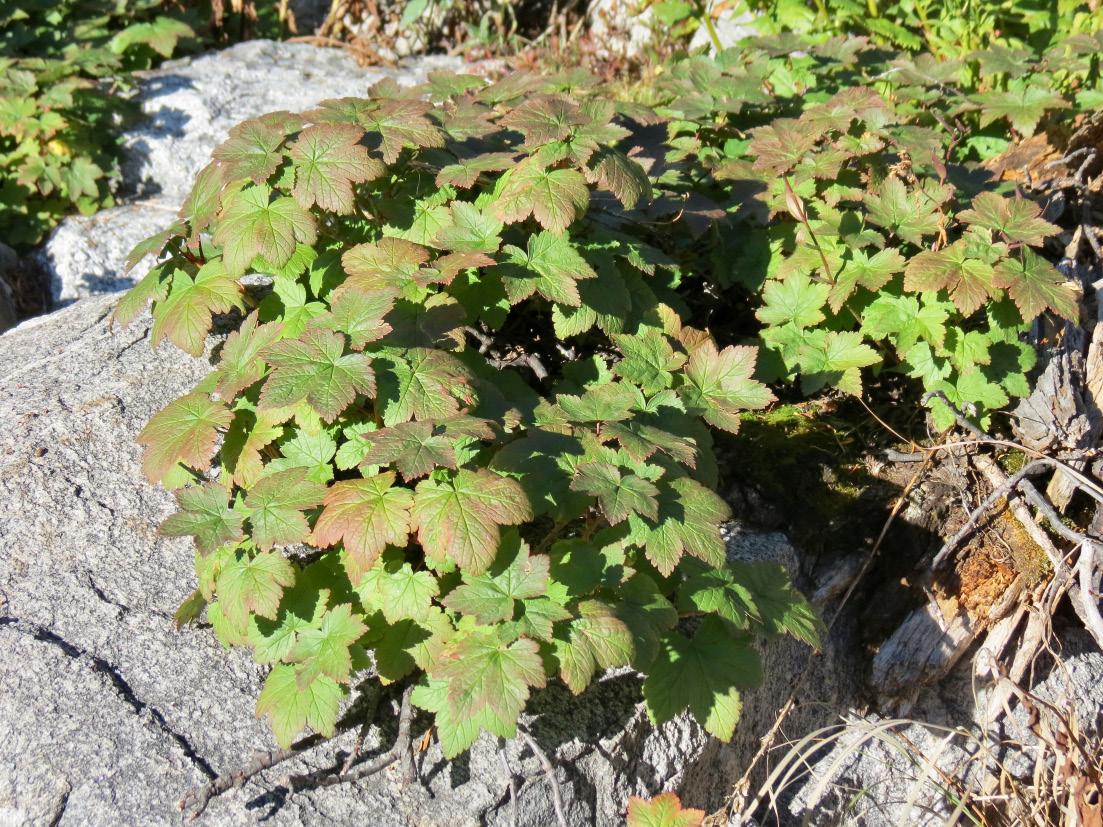
Mystery shrub
Photo by Marlene Borneman
This shrub was past flowering and had no fruits; key points to help identify. I have narrowed it down to two species and made a note to hike these locations next summer when it is in flower and can accurately label. Knowing what “season” to find a plant in flower gives me a head start.
I think of wildflower season as “seasons” within the season. First, Colorado's climate is determined by altitude and plants that grow within layers of altitude. These layers are called Life Zones. Colorado has five Life Zones: Plains, 3,315 feet-5,600 feet, Foothills 5,600 – 8,000 feet, Montane 8,000 – 10,500 feet, Subalpine 10,500 – 11,500 feet and Alpine 11,500 – 14,431 feet in Colorado (highest point in Colorado Mt. Elbert).
The high plains of Colorado begin showing plant life in April as temperatures warm and spring rains nourish the plants. A variety of cacti, plains phlox, and species of Cryptantha are some of the first to appear.
The Foothills are characterized by grasslands, ponderosa forest and shrubs. I think of pasque flowers, western spring beauty, ball cactus and kinnikinnick blooming here from April to mid-June.
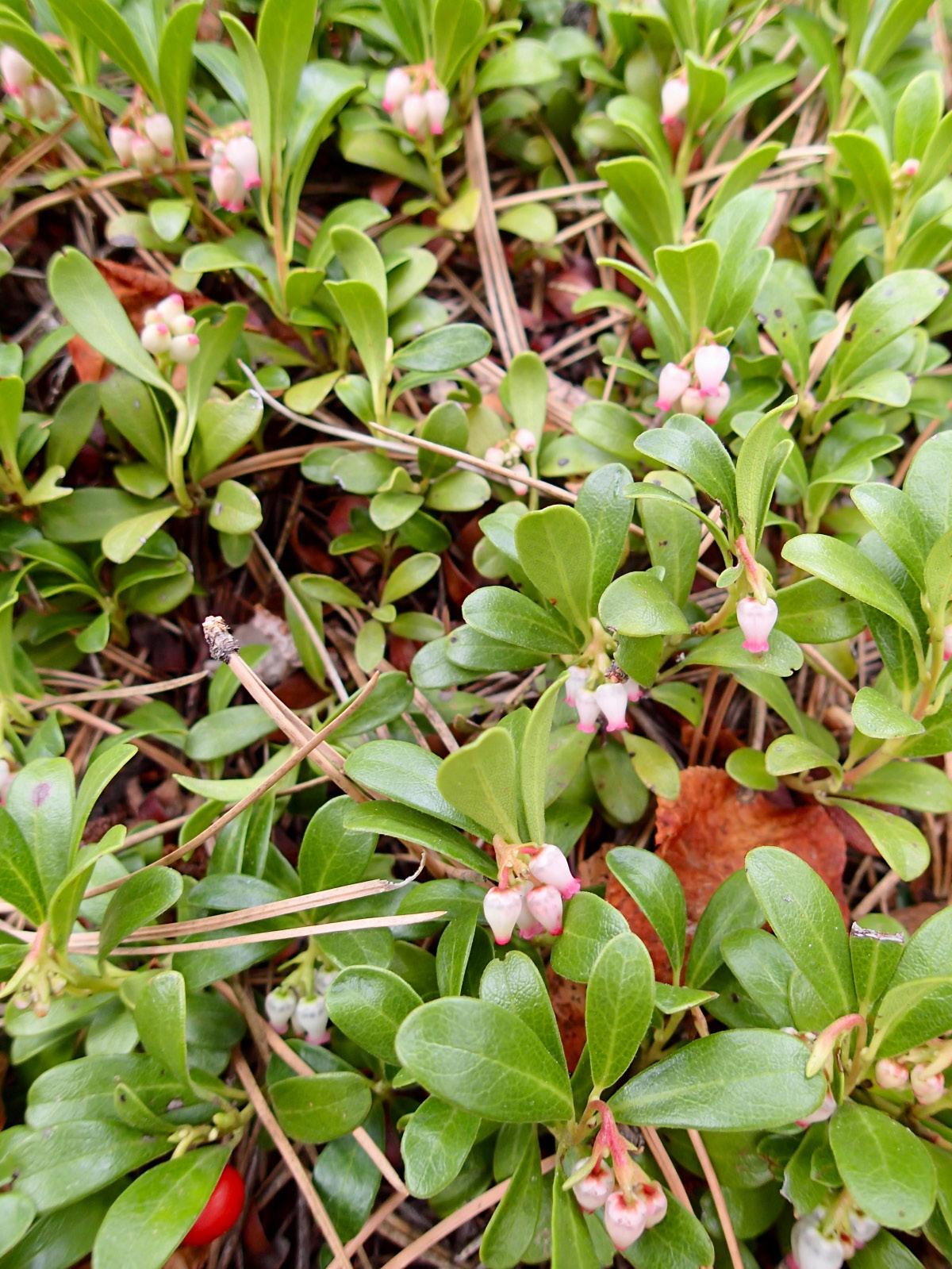
Kinnikinnick
Photo by Marlene Borneman
The Montane Zone is characterized by cooler temperatures, lodgepole pines, spruce and aspen forest. I start expecting to see plants bloom in this zone by the end of May – June. Sagebrush buttercups are common here. Most of Colorado's native orchids grow in the montane zone. krummholz krummholz
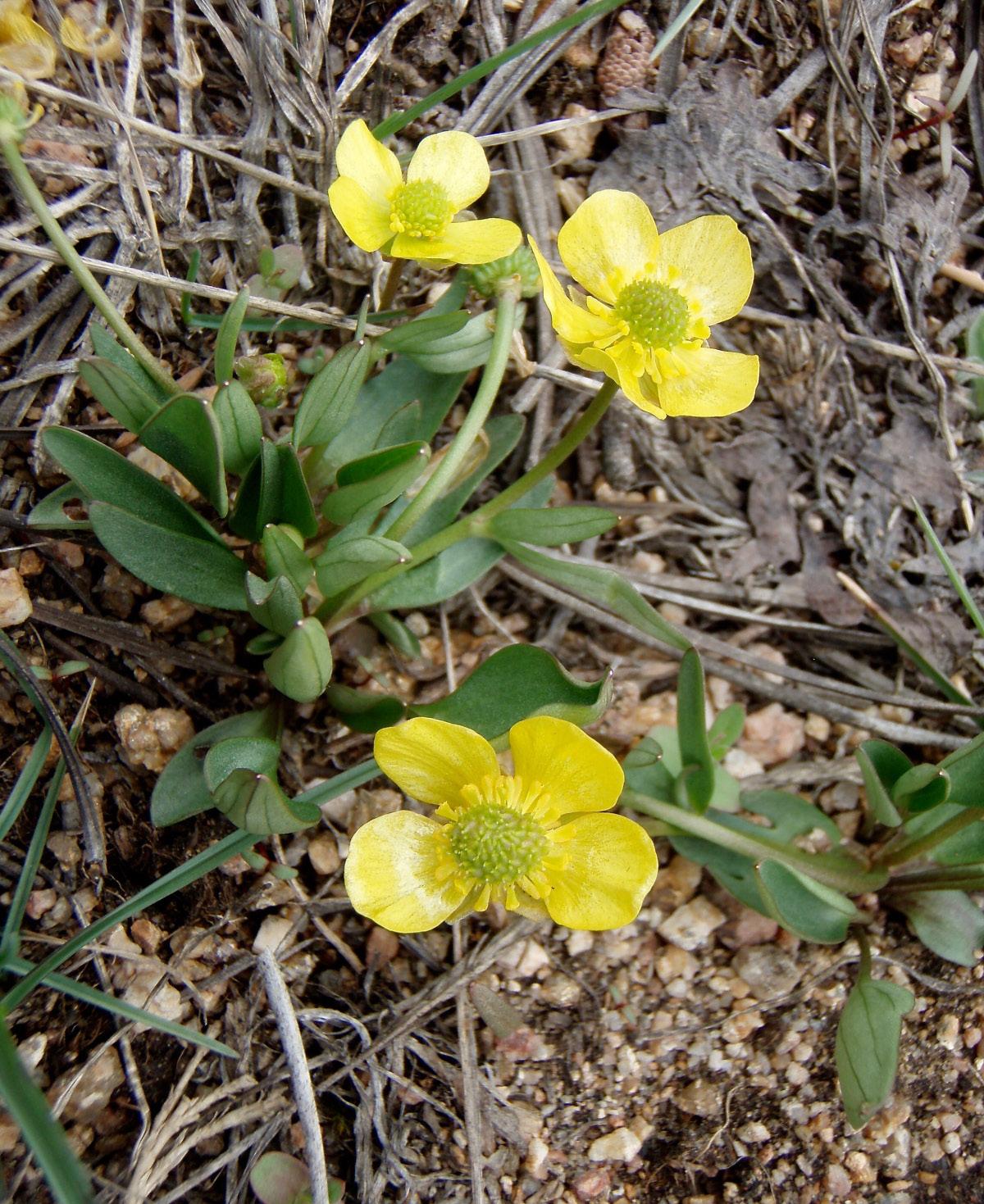
Sagebrush buttercup
Photo by Marlene Borneman
The subalpine zone is where forest gives way to more alpine vegetation like limber pines and krummholz. Krummholz is German for “crooked wood.” It is where spruce/fir tree seeds are whooshed by the wind to higher elevations but due to the harsh climate cannot grow into trees but rather their limbs take root spreading along the ground becoming a tangled mini forest.
I avoid hiking through krummholz as they scratch and trip me every me. Avalanche lilies and alpine laurel are some flowers I find here in early June through the first weeks of July.
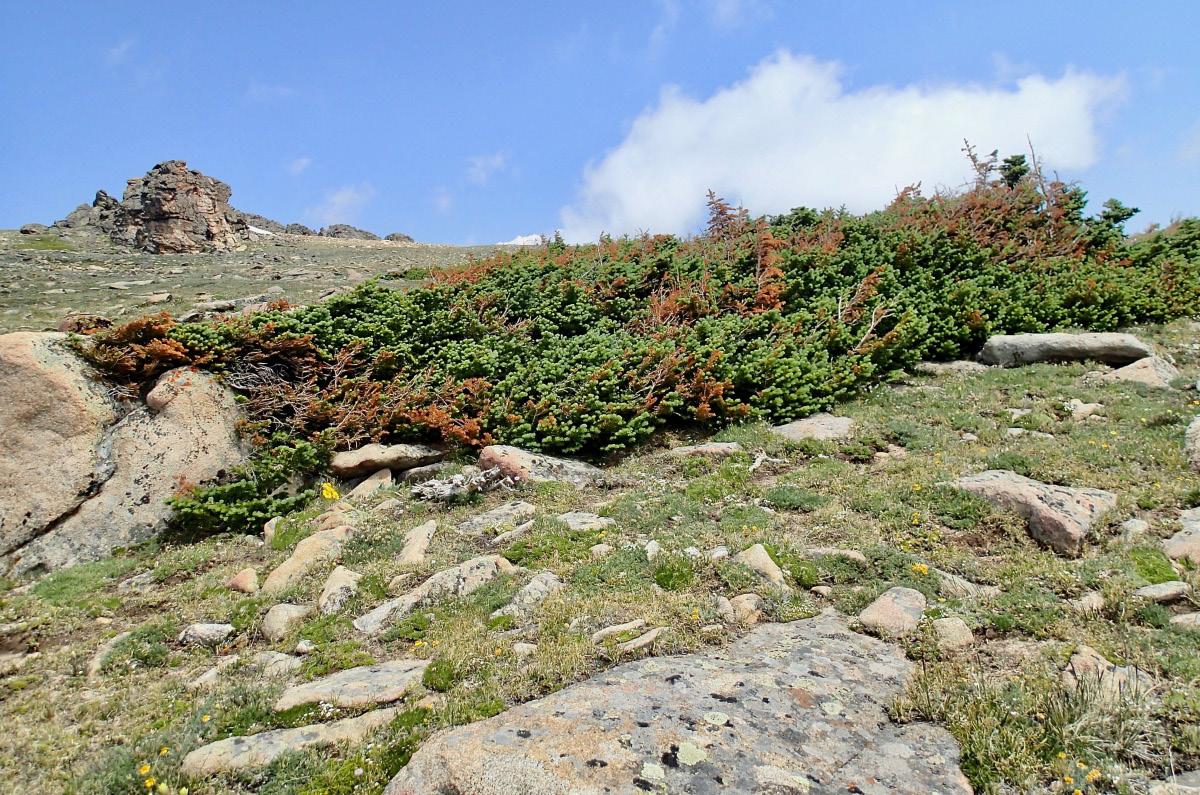
Krummholz
Photo by Marlene Borneman
The alpine zone is the highest zone in RMNP 14,259 feet (Longs Peak). This environment is referred to as Alpine Tundra. Tundra, “Land Above Trees”, refers to an environment that is treeless, cold, windy, and with a short growing season. It is a vast, enormous space with a contrast of tiny plant life.
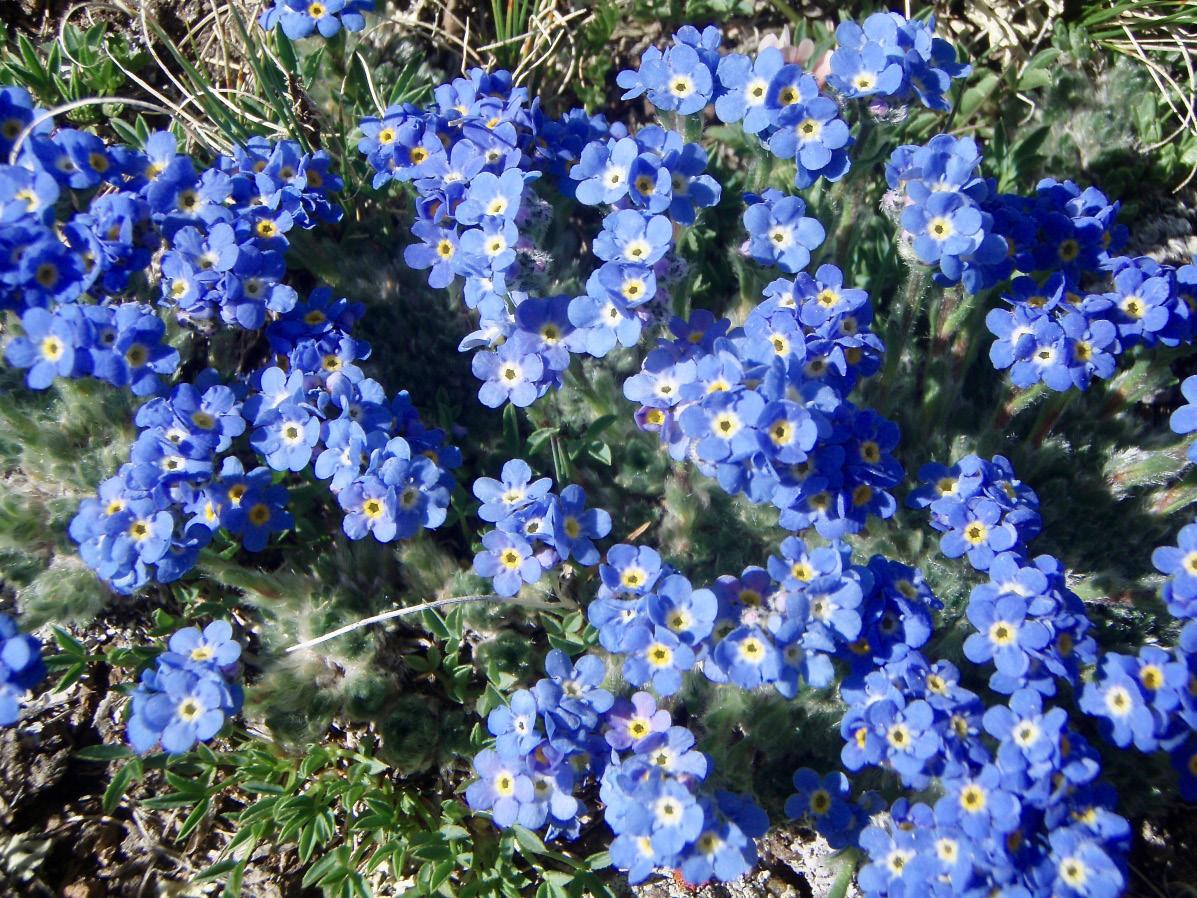
Alpine forget-me-nots
Photo by Marlene Borneman
Approximately one third of RMNP is tundra, one of the largest areas in the lower 48. Alpine plants are hardy and have adapted to this harsh environment. They cling to very thin soil. How do these plants cope? Many alpine plants have long tap roots to anchor them down and help find water. A good number of the alpine plants leaves, stems and flower heads are covered with fine hairs that capture heat and hold moisture. Many of the alpine plants are cushion plants growing very close to the ground in mounds. The strong winds and storms do not blow these plants over, it simply blows over them. The alpine forget-me-not and alpine phlox are some of the first cushion plants to bloom on the tundra in late May.
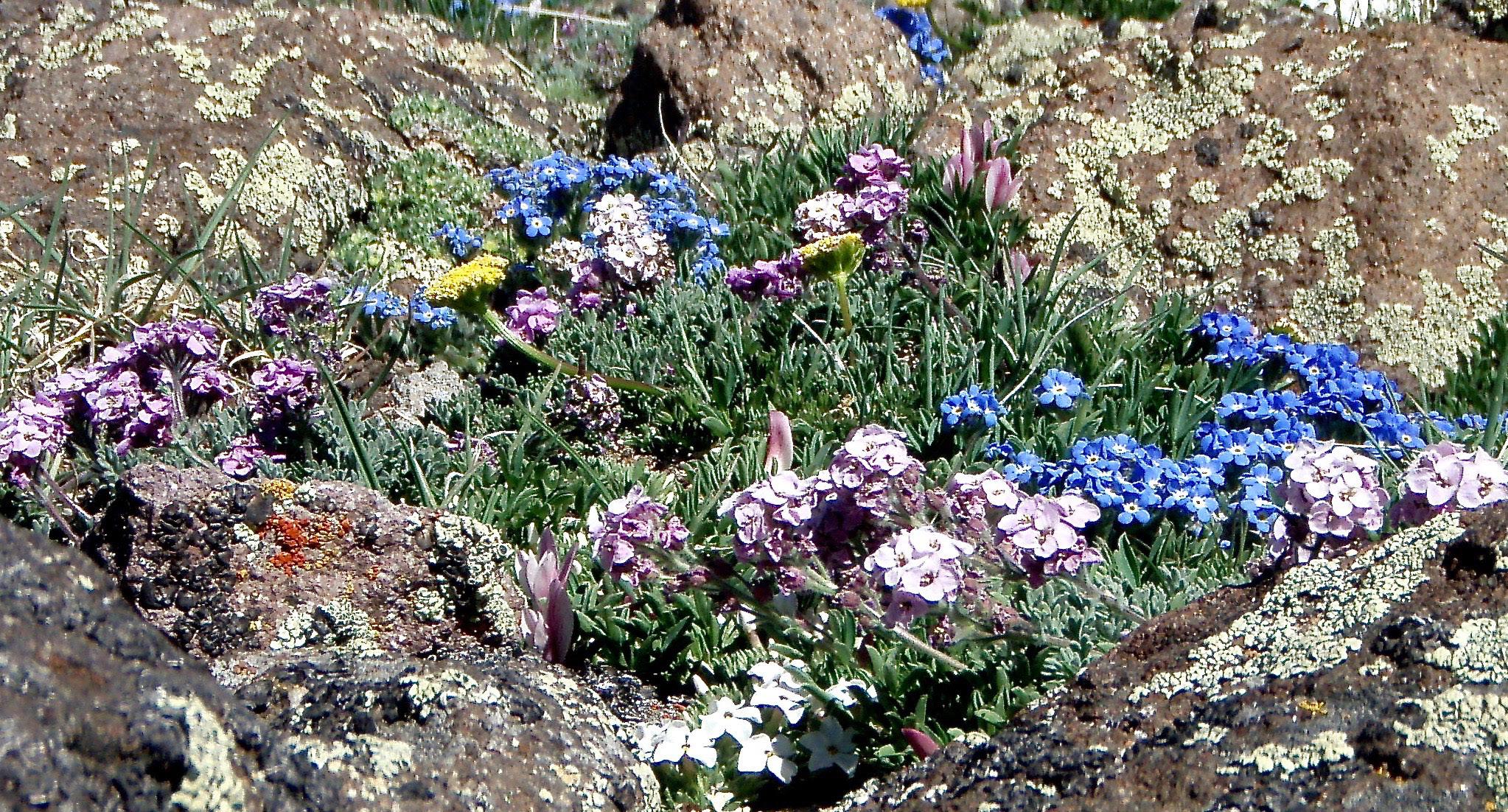
Alpine cusion plans
Photo by Marlene Borneman
Upper foothills, montane, subalpine and alpine life zones cover RMNP.
I have spent a lot of me learning about the plant communities within the alpine life zone. This has helped me reliably find alpine/subalpine species in bloom by knowing the “community” they prefer to grow. Snowbeds, where snow melts slowly and persists late into summer, is where I find resilient plants that even bloom up through the snow! Snow buttercups are common alpine flowers found around snowbeds. Alpine marshes and bogs occur in the flattening slopes at the bottom of a mountainsides where melting snow feeds the ground. Marshes and bogs house early summer bloomers that like to keep their feet wet and cold. I think of marsh marigolds and globeflowers blooming in these subalpine/alpine marshes.
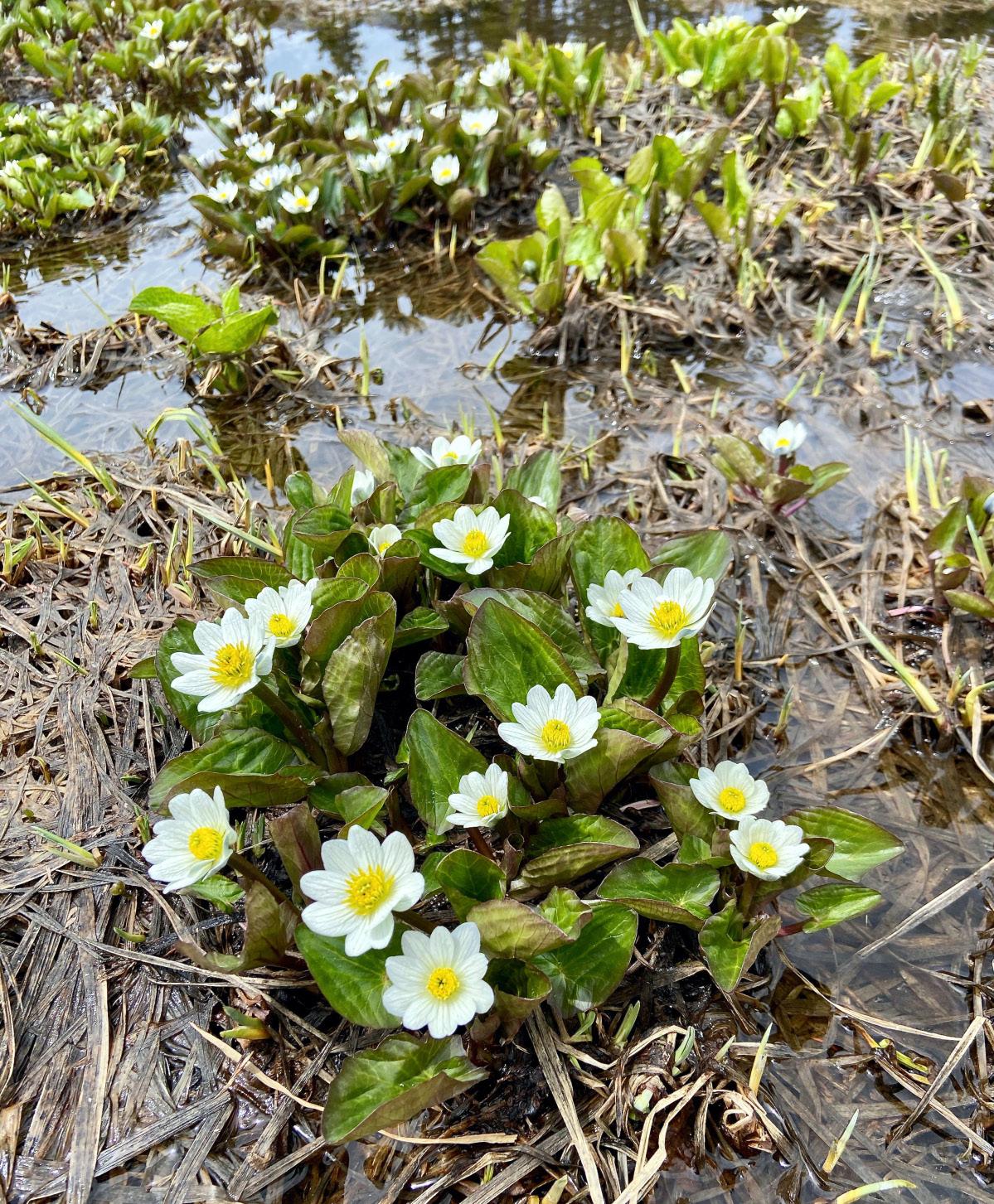
Marsh marigolds
Photo by Marlene Borneman
Plants that grow well in boulder fields and talus/scree slopes bloom in mid-summer when the rocks are warmed by the intense sun and doused by afternoon thunder showers. The boulders and scree provide shelter and the plant roots help stabilize the slopes. Dwarf mountain ragwort, sky pilot, and pygmy goldenweed thrive in these rocky areas.
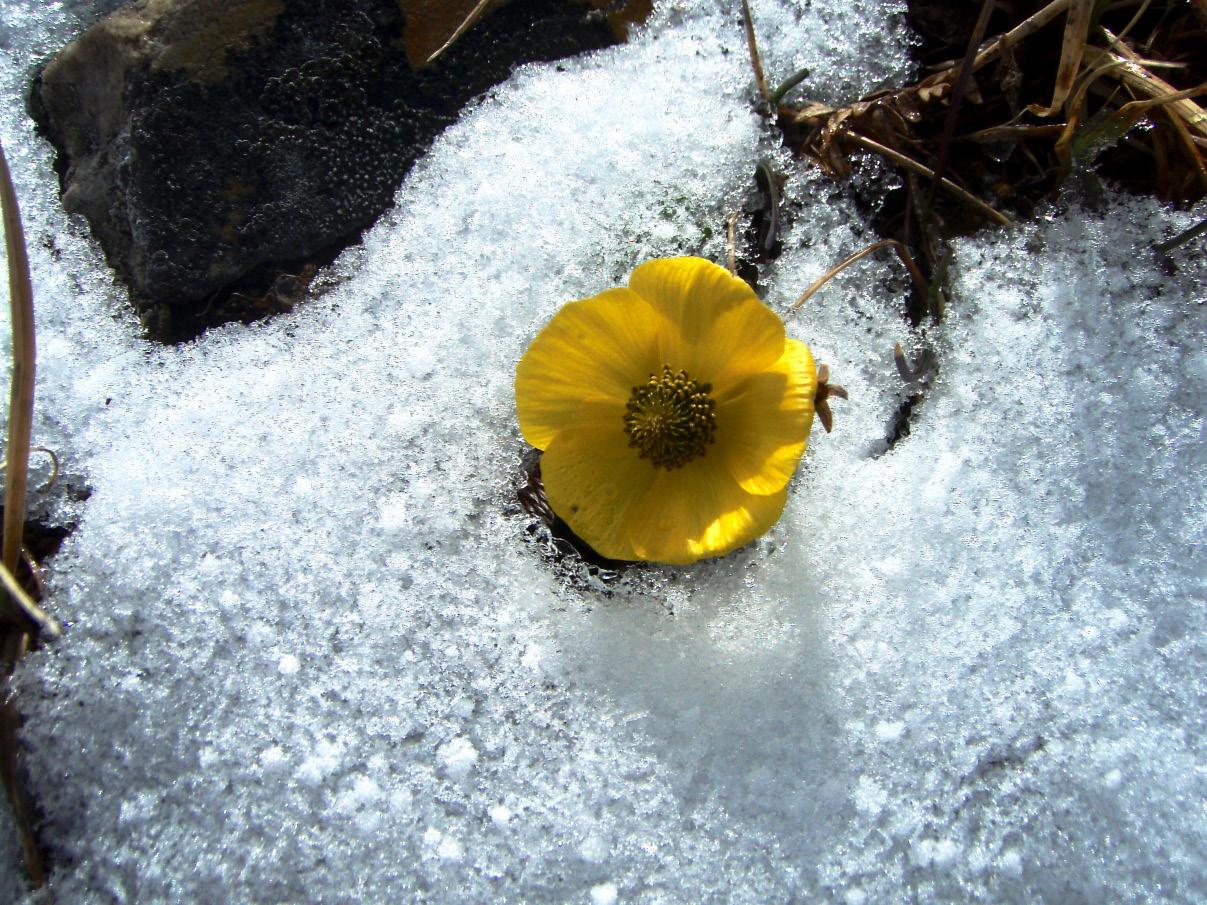
Snow buttercup
Photo by Marlene Borneman
Alpine meadows form where there are rolling dips in the tundra providing shelter from the winds and an area to spread out. Taller plants and grasses are able to grow here in mid-late summer such as arrowleaf ragwort, hairy arnica and elephant head.
Even though I have come to expect certain flowers to bloom in spring, summer, and autumn I keep in mind there are several variables that affect blooming in each life zone.
For years I have made a point to hike to a specific location; at the same date I did the year before expecting a particular plant to be in bloom. During the years I have been doing this I have found the flower(s) to be barely in bud, past the flowering prime or not find the plant at all. I'm never disappointed with the results. It causes me to think what is going on.

An alpine meadow in Rocky Mountain National Park
Photo by Marlene Borneman
Elevation is a key variable. The plains will bloom before the alpine. Chiming bells grow from the plains to the alpine as does the wallflower, but not at the same time due to elevation. But what else effects the plant ability to bloom “on time ” within its life zone?
Spring and summer temperatures can upset the blooming times. Precipitation, including the year's snowpack, will determine the plant's growth and/or ability to bloom. Storms and winds can delay or prevent blooming. Soil conditions that may have changed due to floods, fire, avalanches, animal and/or human disturbance add changes to growth and bloom me, for me, all of it makes each year new and exciting. I really never know what to expect and sometimes get taken by surprise! Bottom line - Mother Nature is in charge.
I used to think come August there was nothing new to see. However, there are several species that prefer mid-late summer/autumn to show off. In the subalpine the rattlesnake plantain orchids and hooded lady's tresses orchids like August to bloom. The alpine arctic gentian is another late bloomer seen in August - September. Other members of the gentian family also come into flower August – September.
In the foothills/montane zones asters begin blooming in August and if the weather cooperates stay strong until October.
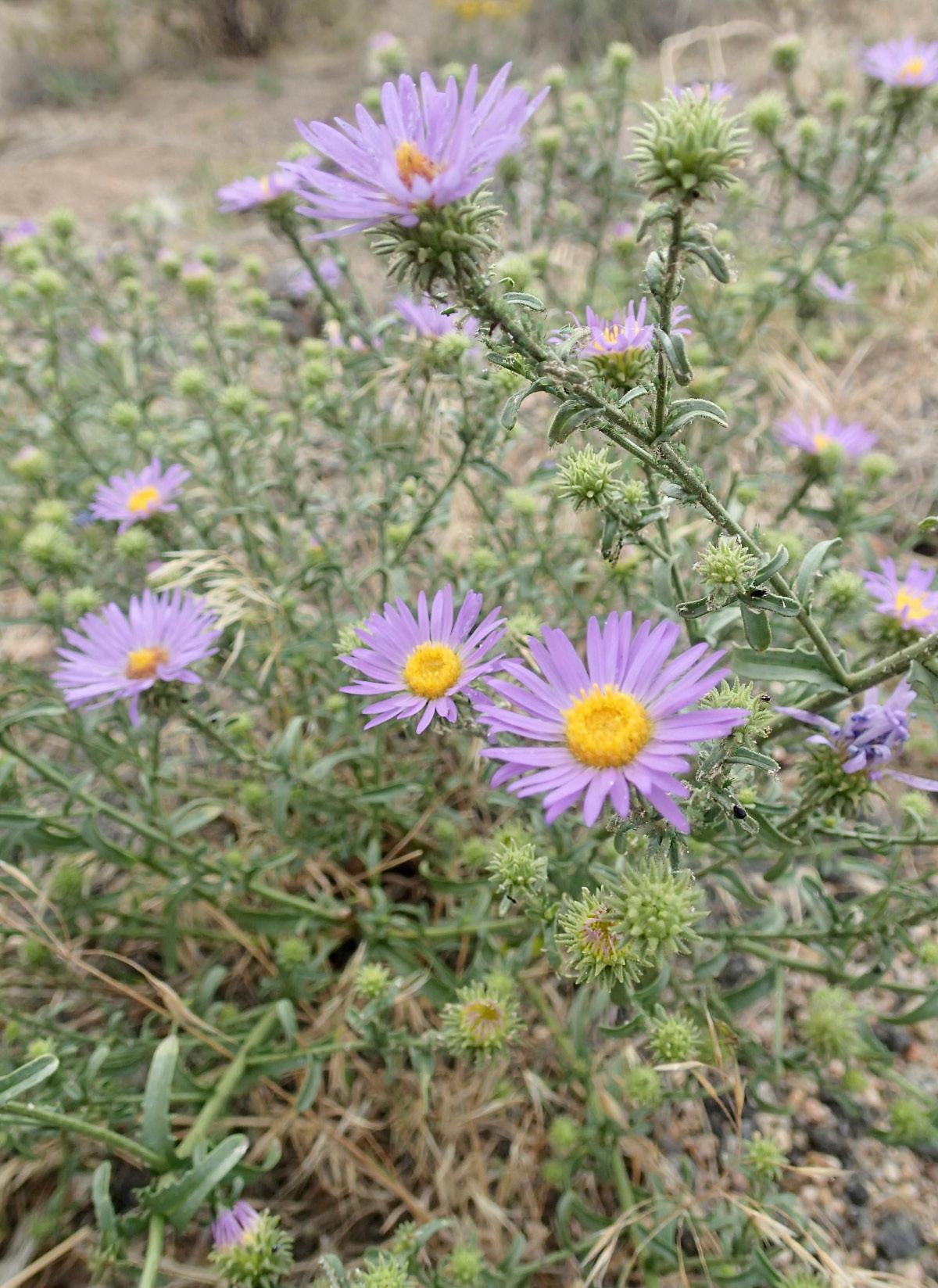
Bigelow's Tansyleaf Aster
Photo by Marlene Borneman
I must say something about climate change in the mountains where it has been so evident this year. With the early warm temperatures bringing an early spring I observed alpine plants blooming in late April and then they were gone!
An early spring also meant blooming plants may have missed the arrival of pollinators. I have said before “one can't live without the other!” Warmer temperatures also meant less precipitation and more evaporation of water in summer months resulting in dry conditions. RMNP is in a drought condition. I'm concerned and possibly saddened to see how climate change plays out in the future for native wildflowers. For now, I remain optimistic and feeling self-assured about identifying that mystery shrub in 2021!
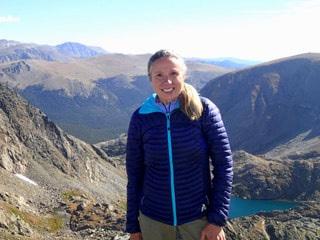
Marlene has been photographing Colorado's wildflowers while on her hiking and climbing adventures since 1979. Marlene has climbed Colorado's 54 14ers, the 126 USGS named peaks in Rocky Mountain National Park and 44 State High Points. She has been a member of the Colorado Mountain Club since 1979 and is a member of the Colorado Native Plant Society. She teaches wildflower classes for the Rocky Mountain Conservancy and provides community programs to educate and promote stewardship for Colorado's wildflowers.
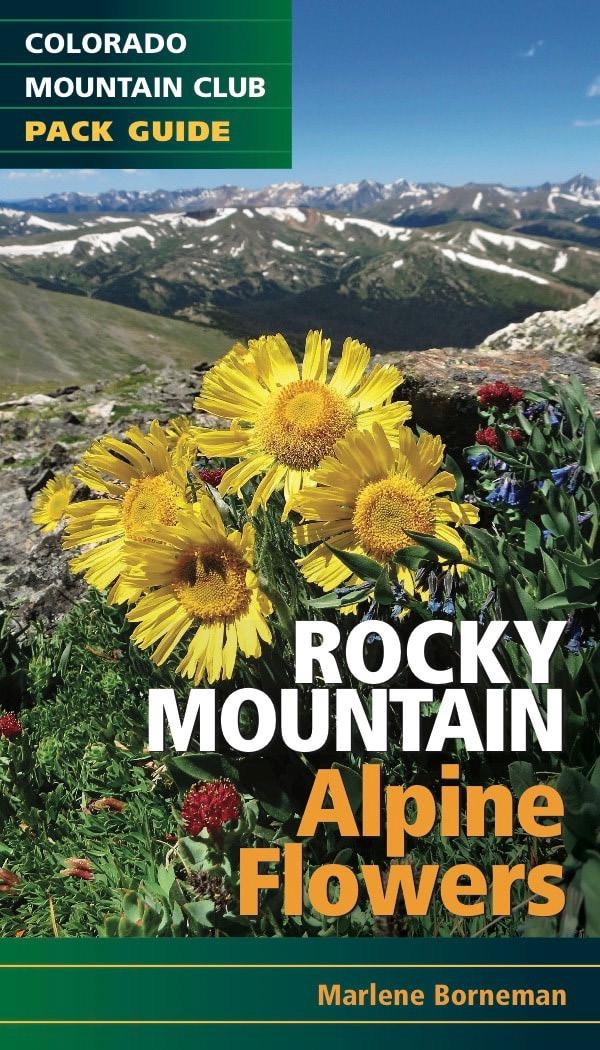
Marlene is the author of Rocky Mountain Wildflowers 2Ed. and The Best Front Range Wildflower Hikes, and Rocky Mountain Alpine Flowers, published by the Colorado Mountain Club.
https://cmcpress.org/collections/educational-wildflowers-and-geology/products/rocky-mountain-alpine-flowers









